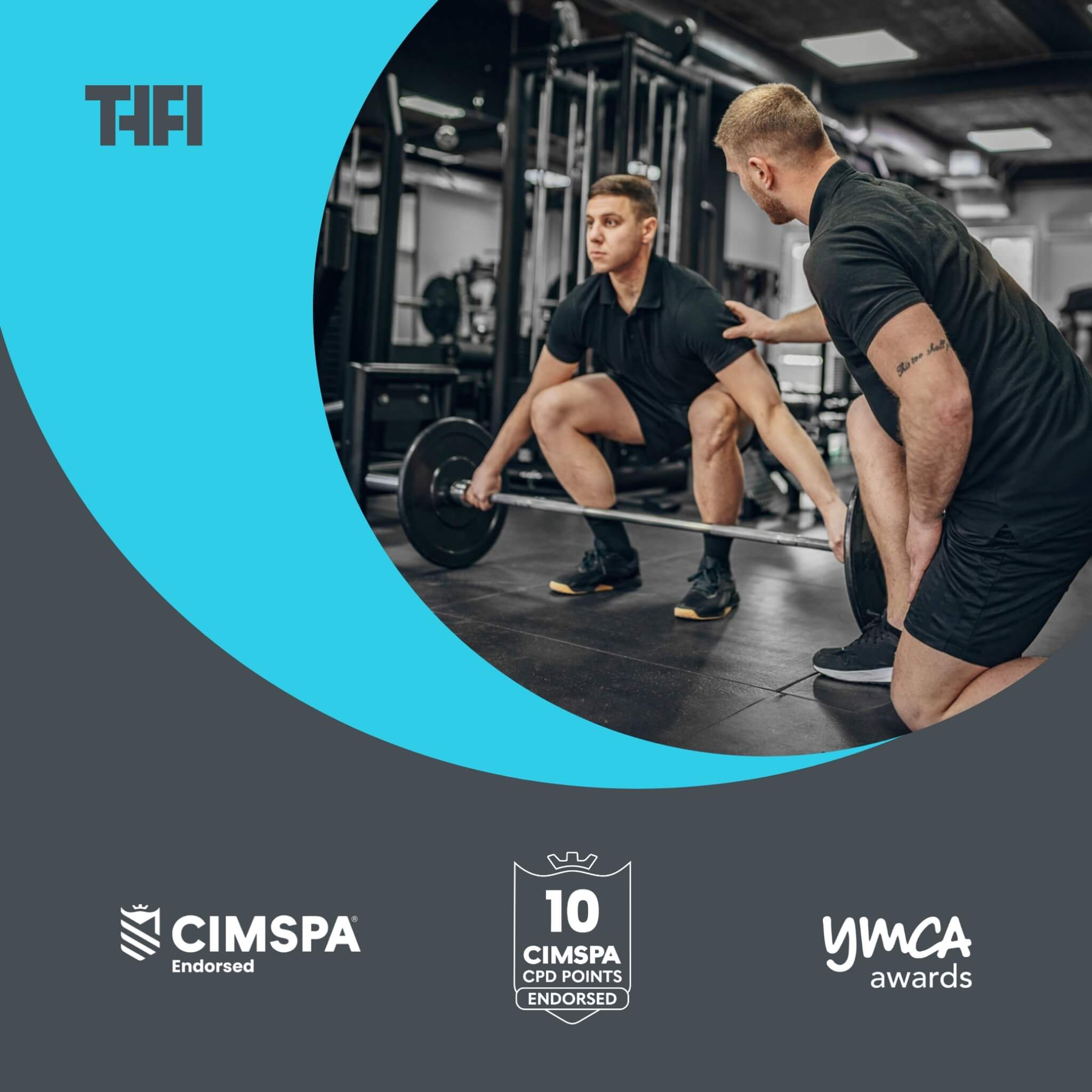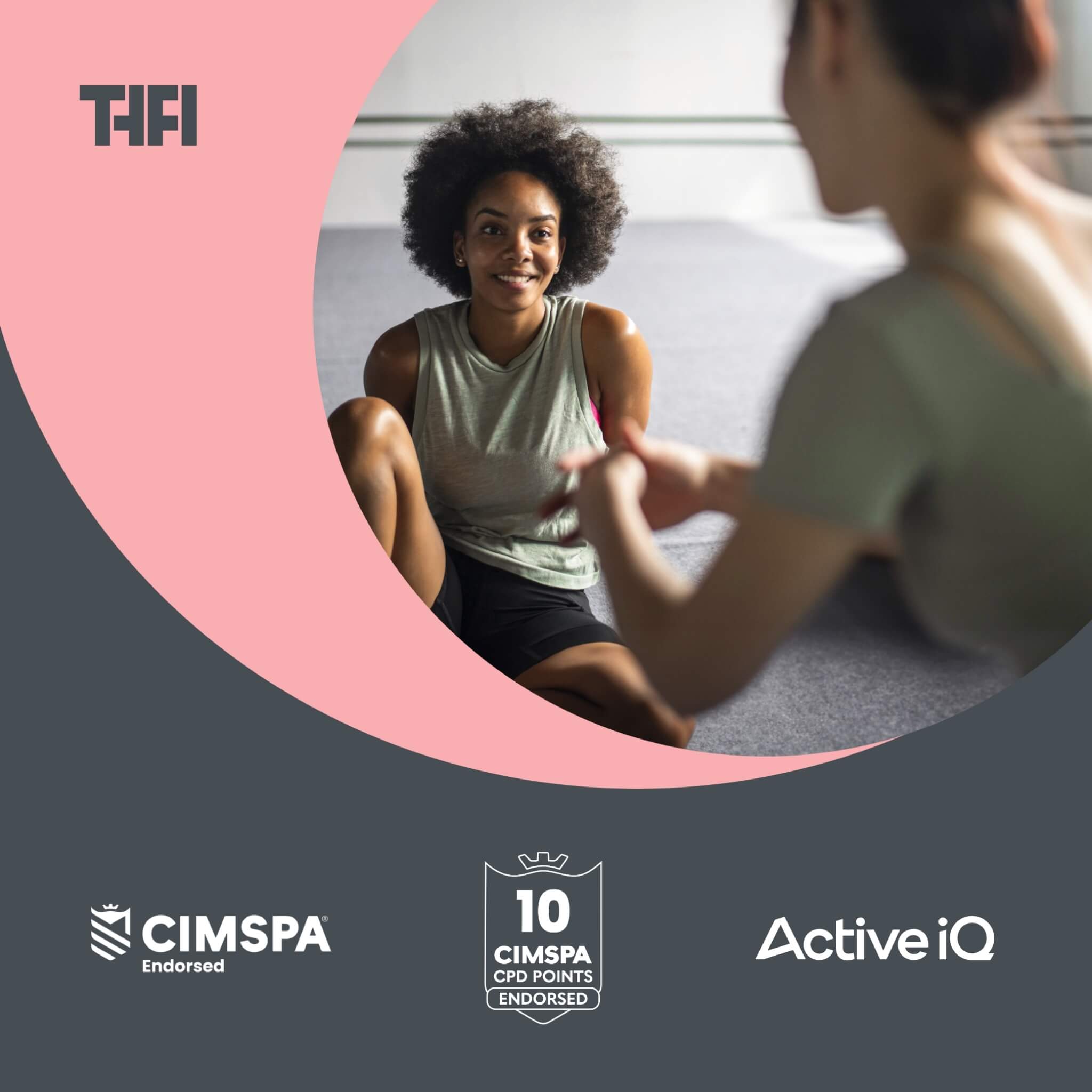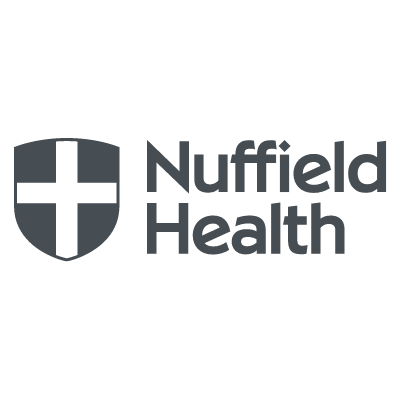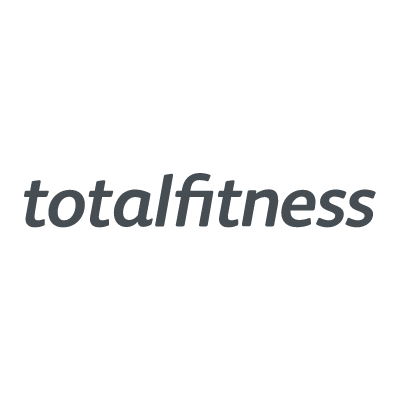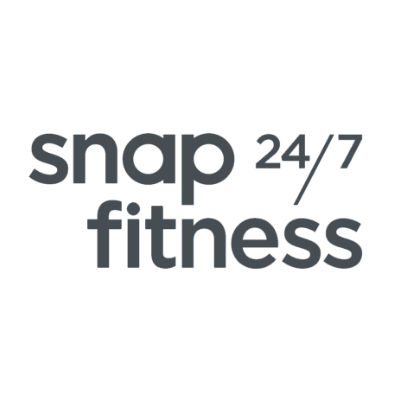How To Design A ‘Foolproof’ Weight Loss Programme For Your Personal Training Clients

How do you create a weight loss programme that’s 100% foolproof for every single client who walks through your door?
It’s a trick question...because every one of your clients is unique and has different goals, motivations, and starting points.
So a one-size-fits-all ‘cookie cutter’ plan isn’t going to cut it to get the kind of results that will have clients handing over hard cash to work with you.
Instead, it’s about learning a few simple but powerful principles that mean you can tailor a customised weight loss program to each client – whether that’s the new mother looking to lose baby weight, or the 50-year-old businessman wanting to get in shape after his divorce.
This article teaches you the principles you need to help your clients lose weight consistently and effectively – from diet planning and training fundamentals to stress management and accountability.
It’s everything you need to know to craft weight loss programs that work like clockwork for your clients every single time...
Setting ‘SMART’ Weight Loss Goals for Your Clients
Many of the people who walk through your doors will want to “lose weight”. But this vague objective is a recipe for disappointment, both for you and your client.
Here's why: generic goals lack direction or clarity so they can often feel overwhelming. How much weight? How fast? Without specifics, it's impossible to track progress or celebrate milestones, which are crucial for keeping your client motivated and engaged.
Here's your chance to shine as a coach – by guiding them towards SMART goals.
- Specific: Instead of "lose weight," aim for "lose 5kg of body fat in 12 weeks."
- Measurable: How will you track progress? Weight, measurements, progress photos – choose methods that work for your client.
- Attainable: Set ambitious yet achievable goals. Discouraging goals lead to frustration and quitting.
- Relevant: The goal should align with your client's overall health and fitness aspirations.
- Time-bound: Attach a deadline to create a sense of urgency and keep them on track.
Goals should be SMART, but they should also be flexible, allowing for the ebb and flow of life's realities. This initial step is not just about setting targets but also about building trust and rapport. You're not merely a trainer; you become a trusted advisor, someone who listens and adapts to your client's evolving needs.
The Role of Nutrition in Weight Loss
The truth is, no amount of training can outpace a poor diet.
Your client won’t lose weight without being in a calorie deficit consistently – a state where the body expends more calories than it consumes.
A big part of this is helping them to control their calorie intake from their diet in a way that’s healthy and sustainable.
Understanding Calorie Deficit
A calorie deficit occurs when you consume fewer calories than your body needs for daily activities and maintenance. This forces the body to tap into stored fat for energy, resulting in weight loss. The challenge, however, lies in creating this deficit without compromising nutritional needs or energy levels.
Quality Over Quantity
Focusing on the quality of food is crucial for a sustainable calorie deficit. Encouraging your clients to choose whole, minimally processed foods over high-calorie, nutrient-poor options can make a significant difference. Whole foods, rich in nutrients, tend to be more filling and less calorie-dense, allowing your clients to feel satisfied while still maintaining a deficit.
Macronutrients and Their Roles
Understanding macronutrients—proteins, fats, and carbohydrates—is essential for effective weight management.
High-Protein Foods: Protein is vital for muscle repair and growth, especially important when your clients are engaging in regular exercise as part of their weight loss program. It's also highly satiating, which can help reduce overall calorie intake by keeping hunger at bay. Encourage lean sources of protein such as chicken, fish, legumes, and tofu.
Healthy Fats: Contrary to popular belief, fats are not the enemy. They're essential for hormonal balance and can keep your clients feeling fuller for longer. Focus on sources of healthy fats like avocados, nuts, seeds, and olive oil.
Quality Carbohydrates: Carbohydrates are the body's primary energy source, but it's crucial to choose high-quality, fibre-rich carbs like vegetables, fruits, whole grains, and legumes. These not only provide sustained energy but also help with fullness and nutrient intake.
Portion Control and Hydration
Teaching your clients about portion sizes can prevent overeating, even of the healthiest foods. Utilising tools such as food diaries, apps, or even simple visual cues can aid in managing portions effectively. Additionally, emphasizing the importance of hydration is key, as water can aid in digestion, nutrient absorption, and even appetite control.
Educating and Empowering Clients
Ultimately, the goal is to educate and empower your clients to view food as a positive aspect of their lives, a source of nourishment and enjoyment rather than restriction and anxiety. Encouraging a balanced approach to eating, focusing on nutrient-dense foods, and teaching them how to manage their energy intake effectively are all pivotal steps in their weight loss journey.
Psychological Aspects of Weight Management
The journey to weight loss is as much a mental challenge as it is a physical one. The psychological barriers – be it stress, emotional eating, or a lack of self-belief – can often be the toughest to overcome. As a personal trainer, your role morphs into that of a motivator, counsellor, and cheerleader.
The Impact of Mental and Emotional Barriers
Weight loss is as much about overcoming mental hurdles as it is about changing physical habits. Psychological barriers such as stress, emotional eating, and a lack of self-belief can significantly hinder progress. Stress, for instance, can affect sleep and recovery, and can lead to poor diet choices. Emotional eating often serves as a coping mechanism for dealing with unpleasant emotions, leading to overeating and a reliance on high-calorie, nutrient-poor foods.
Addressing these barriers requires a nuanced understanding of each individual’s triggers and coping mechanisms. Personal trainers play a critical role in identifying these patterns and providing the tools and support needed to navigate them.
The Power of Goal Setting and Positive Reinforcement
Setting clear, achievable goals is foundational in the psychological journey of weight loss. Small, specific targets create a roadmap for success, making the overarching goal seem more attainable. This strategy, coupled with positive reinforcement, can significantly boost a client’s motivation and self-efficacy. Celebrating every milestone, no matter how small, reinforces the progress being made, while learning from setbacks in a non-judgmental way promotes resilience and determination.
Integrating Mindfulness and Stress Management
Incorporating mindfulness and stress management techniques into a weight loss program can enhance a client's ability to navigate psychological barriers. Mindfulness practices encourage a present-moment awareness, which can help in recognizing and managing emotional eating triggers. Techniques such as deep breathing, meditation, or yoga can reduce stress levels, making it easier for clients to focus on their health and well-being.
Furthermore, promoting a healthy sleep routine is essential, as sleep deprivation can affect decision-making processes, increase cravings for high-calorie foods, and decrease energy levels for physical activity. Encouraging clients to establish a regular, restorative sleep schedule is a key component of a holistic weight loss strategy.
Building Mental Resilience
Ultimately, building mental resilience is key to navigating the weight loss journey. This involves developing a growth mindset, where challenges are seen as opportunities for learning and growth rather than insurmountable obstacles. Encouraging clients to reflect on their experiences, understand their responses to stress, and develop healthier coping mechanisms can significantly impact their long-term success.
Designing a ‘Foolproof’ Weight Loss Training Plan
Setting goals, getting a nutrition plan in place, and getting your clients in the right mindset is one part of the equation.
The other is crafting a training program that helps support the weight loss process – and it’s an art form.
This section of our guide is dedicated to the nuts and bolts of creating a program that not only promotes weight loss but also builds a foundation for lifelong fitness and health.
It’s about striking the right balance between intensity and rest, challenge and recovery, pushing forward and pausing to reflect.
Creating the right training program for your client
In the world of fitness and weight loss, the concept of a "balanced" exercise programme needs a more nuanced approach than simply mixing different types of workouts. The essence of effective programming lies in its customisation to the individual's needs, goals, preferences, and current physical condition. This customisation employs a variety of tools and methodologies, with weight training, cardiovascular activities, NEAT (Non-Exercise Activity Thermogenesis), and even sports playing pivotal roles based on the client's specific objectives.
The Central Role of Weight Training
Weight training stands at the core of customised exercise programmes for its dual benefits on strength enhancement and muscle building. Muscles are metabolically expensive tissues; they burn calories even when at rest, thereby increasing the Resting Metabolic Rate (RMR). Moreover, during periods of calorie deficit, weight training sends a crucial signal to the body to retain muscle mass, a key factor in ensuring that the majority of weight loss is fat, not muscle. This not only aids in weight loss but also enhances the body's overall composition and functionality.
Cardiovascular Activities for Enhanced Energy Expenditure
Cardiovascular exercise is another tool in the weight loss arsenal. Its primary benefit lies in its ability to increase caloric expenditure, contributing to the crucial calorie deficit needed for weight loss. The type of cardio integrated into a programme can vary widely based on the client's preferences and response—some may benefit from the intensity of HIIT for quick, efficient workouts, while others may find more enjoyment and better results from steady-state cardio, such as running, cycling, or swimming.
Leveraging NEAT for Caloric Burn
NEAT, or Non-Exercise Activity Thermogenesis, represents the calories burned through daily activities outside of structured exercise, such as walking, standing, and even fidgeting. Encouraging clients to increase their NEAT can be a highly effective strategy for enhancing overall energy expenditure without the need for additional gym time. This can be as simple as setting daily step targets, promoting the use of standing desks, or incorporating small habits that increase movement throughout the day.
Incorporating Sports and Activities for Enjoyment and Engagement
Incorporating sports or recreational activities into a weight loss programme can serve multiple purposes—it adds variety, promotes enjoyment, and also contributes to caloric burn. For clients with a passion for a particular sport, this can provide a motivational boost, making exercise feel less like a chore and more like a rewarding part of their day. It underscores the principle that exercise should not only be about weight loss but also about enhancing the quality of life and finding joy in movement.
The Art of Customisation
Customising an exercise programme requires a deep understanding of the client's lifestyle, preferences, physical limitations, and goals. This involves continuous dialogue, assessment, and adjustments to ensure the programme remains aligned with their evolving needs and circumstances. It's not just about selecting exercises but about crafting a comprehensive approach that optimises weight loss, improves physical health, and supports mental wellbeing.
A balanced exercise regimen is the cornerstone of any effective weight loss program. The key here is variety—combining cardiovascular training, strength exercises, and flexibility workouts to keep the body guessing and the mind engaged. Cardiovascular activities burn calories and improve heart health, while strength training builds muscle, which in turn boosts metabolism even at rest.
However, the golden rule is customization. What works for one client may not work for another. Some may thrive on high-intensity interval training (HIIT), while others may see better results from steady-state cardio combined with weight training. It’s your responsibility to gauge their fitness level, preferences, and goals, then tailor the regimen accordingly. Remember, a well-structured program not only maximizes weight loss but also minimizes the risk of injury, ensuring your clients remain healthy and motivated.
The Importance of Progress Tracking and Adaptations on a Weight Loss Program
Regular check-ins and assessments not only provide tangible proof of progress but also keep motivation high. Use a variety of methods to track progress, such as body measurements, fitness tests, and even subjective wellbeing scores. However, the true art lies in using this data to adapt the program.
Adaptations might mean ramping up the intensity, introducing new exercises, or perhaps scaling back when life gets in the way. This flexible approach ensures that the program evolves alongside your client’s capabilities and goals, keeping them engaged and avoiding plateaus. Encourage an open dialogue, making it clear that adjustments are not only expected but essential for long-term success.
Beyond the Basics of Weight Loss Programmes
This section explores advanced techniques for plateau prevention, harnessing technology for increased engagement, and cultivating an environment of accountability and support. This will help you improve your results and set you apart as an expert.
Advanced Strategies for Plateau Prevention
Plateaus in weight loss are as frustrating for the client as they are challenging for the personal trainer. However, they're also opportunities to demonstrate your expertise by implementing advanced strategies to reignite progress. One effective method is periodization—structuring the program in phases that focus on different fitness goals, such as strength, endurance, and power. This variation not only keeps the workouts interesting but also challenges the body in new ways, preventing adaptation and stagnation.
Incorporating unexpected elements, like cross-training or adventure sports, can also inject new life into a stalling program. These activities can reignite a client’s passion for exercise, improving both physical and mental engagement.
Integrating Technology and Apps for Enhanced Engagement
In today's digital age, technology and fitness apps offer unprecedented opportunities to enhance client engagement and streamline the tracking of progress. Wearables can monitor heart rate, sleep patterns, and activity levels, providing real-time data that can be used to personalise training programs further.
Fitness apps, on the other hand, can offer nutritional guidance, workout suggestions, and even mindfulness exercises, offering a holistic approach to weight loss.
Leveraging these tools not only helps in keeping your clients motivated but also in establishing a data-driven approach to fitness. Encourage your clients to share their data with you, enabling a collaborative analysis of their progress and fine-tuning of their programs. This not only personalises their experience but also fosters a sense of partnership in their fitness journey.
Building Accountability and a Supportive Environment for Your Clients
If you want your client to truly succeed, you need more than a good training plan and a well thought-out diet. You need to give them accountability and support to help them execute it...not just for that hour session, but when they’re away from the gym too
There are a number of techniques and strategies you can use as a personal trainer...
Implementing Regular Check-ins and Progress Tracking
Consistent communication is key to maintaining motivation and accountability. Schedule regular check-ins with your clients, not just to discuss workouts but to offer a platform for them to share their triumphs and setbacks in their overall health journey. These check-ins can be via phone, email, or even text messages, providing a touchpoint that reminds them of their commitment and your support.
Utilising Food Logs and Nutrition Tracking Apps
Nutrition plays a critical role in weight loss, and keeping a food log can significantly improve dietary choices. Encourage your clients to track their daily intake using food diaries or nutrition tracking apps. These tools not only help in maintaining a calorie deficit but also educate clients on the nutritional value of their food choices. Reviewing these logs during your check-ins provides an opportunity to offer tailored nutritional advice and adjustments to their eating habits.
Setting Up Weekly Measurements and Weigh-ins
Regular measurements and weigh-ins are tangible indicators of progress. They offer both the trainer and client a clear picture of how the fitness plan is translating into results. These sessions can be incredibly motivating, as they provide concrete evidence of improvement. However, it's important to frame these moments with a focus on overall health and body composition changes, rather than solely on weight, to avoid discouragement.
Creating a Support Network
The journey to weight loss is filled with challenges that can be daunting when faced alone. Establishing a community of support, whether through group training sessions, online forums, or social media groups, can make all the difference. These platforms allow clients to share their experiences, seek advice, and celebrate each other's successes. Peer support not only boosts motivation but also fosters a sense of belonging and encouragement that can be pivotal in navigating difficult moments.
Educating for Sustainable Change
Education is a powerful tool in empowering your clients to make informed choices that align with their weight loss goals. Beyond advising on workouts and nutrition, educate them on the importance of lifestyle changes that contribute to weight loss, such as sleep hygiene, stress management, and the benefits of an active lifestyle. Providing resources, workshops, or even recommended readings can equip them with the knowledge to make healthier choices independently.
Conclusion
Creating a successful weight loss program isn’t just down to one element like exercise or good diet. It’s not just a one-size-fits-all approach.
It demands a holistic perspective that encompasses the physical, nutritional, and psychological dimensions of health.
Success lies in understanding your client's unique needs, crafting a balanced and dynamic exercise regime, leveraging the latest technology for engagement, and fostering an environment of accountability and support.









